Education|History|Nature & Science
Q&A: Tia Nelson on new Gaylord Nelson Education Resource
PBS Wisconsin Education has released a new Wisconsin Biographies story titled, Gaylord Nelson: A Vision for the Earth.
04/14/20
Education|History|Nature & Science
PBS Wisconsin Education has released a new Wisconsin Biographies story titled, Gaylord Nelson: A Vision for the Earth.
04/14/20
PBS Wisconsin Education has released a new Wisconsin Biographies story titled, Gaylord Nelson: A Vision for the Earth. Wisconsin Biographies is a collection of free educational, online media resources that shares the stories of notable Wisconsinites and enriches grade school social studies and literacy curriculum.
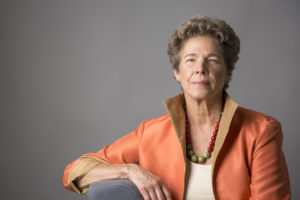
Tia Nelson. Photo Credit: Kevin J. Miyazaki.
On the Wisconsin Biographies website, students in grades 3-8 can explore Nelson’s story using an animated video, short text biographies written at three reading levels, two interactives, an image gallery and access additional resource lists.
Tia Nelson, academic, environmental activist, public servant and daughter of Gaylord Nelson provided the voice over for the animated video. We talked with Tia to learn more about her involvement in the project!
Gaylord Nelson: A Vision for the Earth is available for free online access at pbswisconsineducation.org.
Read on to watch the animated video and learn more about the resource!
How did you get involved in this Wisconsin Biographies resource and tell me about your relationship to the subject?
Tia Nelson: I love the work of Wisconsin Biographies because the series helps kids understand how children from Wisconsin have gone on to make contributions to the world, like my dad. It’s a fabulous resource to learn about people from Wisconsin, and draw inspiration from them. One of the things I especially liked about the Wisconsin Biographies’ animated film of my dad is that it captured how his early experiences helped shape his later passion for public service and the environment – from enjoying the forests, lakes and streams near his home, to riding in the back of his parents’ Model-T Ford to attend political meetings. And it was a blast to narrate this film (and relive my childhood in animated form next to my dad!)
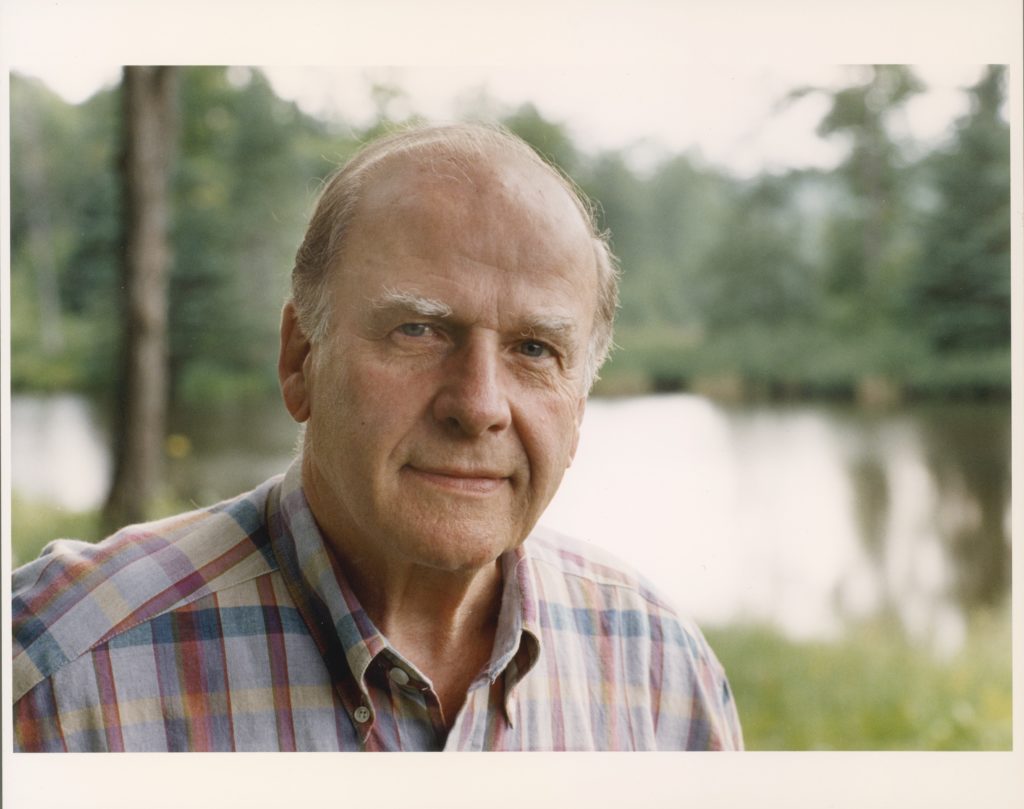
Gaylord Nelson Portrait. Wisconsin Historical Society. WHi-117862.
What is your goal for the students that use this resource? What do you hope they get from it?
I want children to see the hope and the promise of getting involved in building a brighter future. When kids learn about my father’s story from Wisconsin Biographies, I hope they take away that he was just a little boy from a small town with a dream to go into public service and work for the environment. After learning about how my dad took that dream and went on to do great things with it, I think kids will learn that they can make a difference – and we all can make a difference. After all, my dad was just a little kid like them – and he grew up to accomplish unimaginable things.
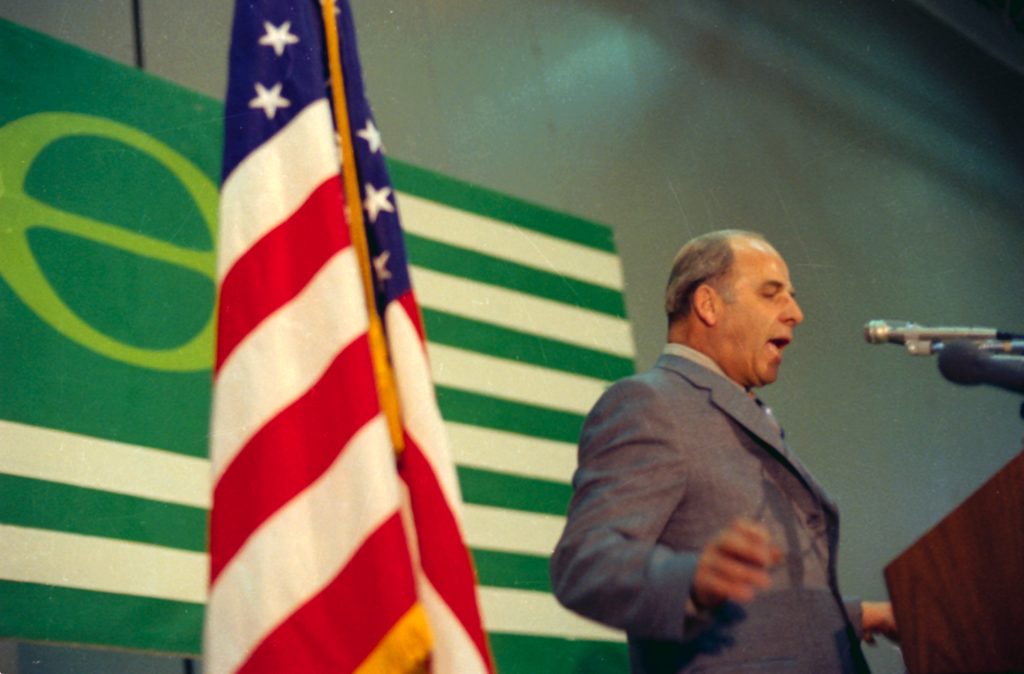
Gaylord Nelson speaking. Wisconsin Historical Society. WHi-48017
Gaylord Nelson founded Earth Day 50 years ago this month. For you, what is the significance of Earth Day and the 50th anniversary?
It’s a reminder that we’ve come a long ways since the first Earth Day – remember, there was no Clean Air Act or Clean Water Act back then. We’ve made great progress but have important work to do, so that kids can celebrate a bright future. I also hope that people will take a close look at what my dad did to make Earth Day such a success. He marshaled the energy of young people, by taking the model of the Vietnam War teach-in and applying it to the environment. And perhaps forgotten today, Earth Day – and the environmental movement as a whole – was a bipartisan effort. My dad made it a priority to reach across the aisle to involve Republicans, and many of the seminal environmental laws passed in the early ‘70s had the support of Republican lawmakers – not to mention a conservative Republican president, Richard Nixon.
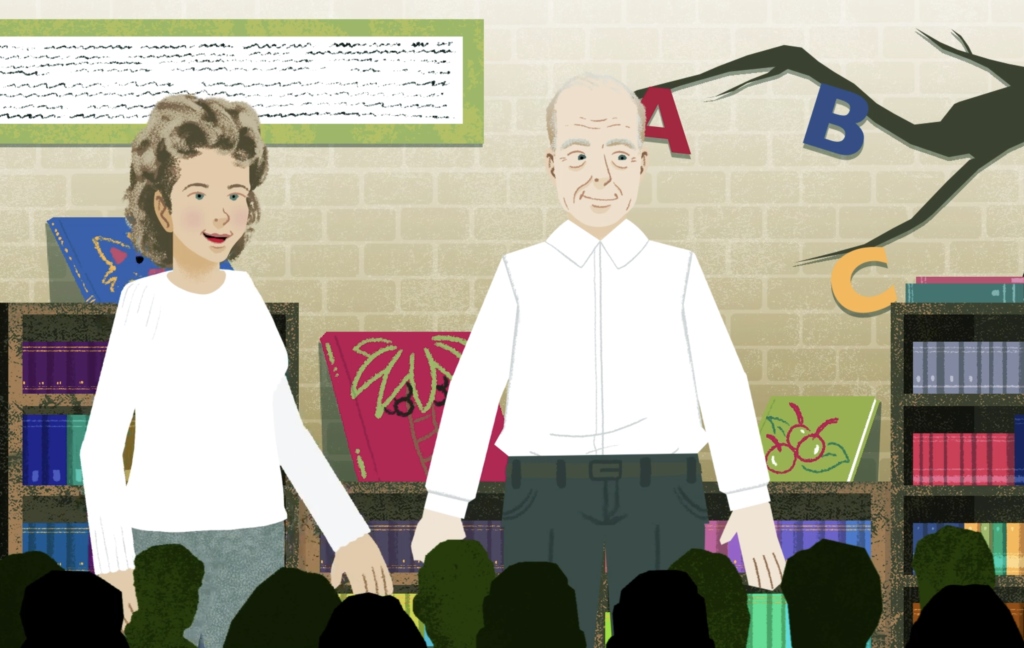
Gaylord and Tia Nelson speaking to students. Production still.
The title of this resource is Gaylord Nelson: A Vision for the Earth. What is your vision for the Earth and how can students help in making that vision a reality?
I want students to be engaged so that they can make a positive impact on the planet. My hope is that they become involved in their communities and become good stewards of the air and water. I’d like them to see public service as an honorable way to make a difference, like my father did in passing laws from civil rights to environmental protection. For me, the most important message is that individual action matters. It’s also important that they learn that it was boys and girls just like them, a half-century ago, who helped fuel the modern environmental movement. Like then, we are at a pivotal moment for the environment, and they can make the kinds of contributions that kids did back in 1970.
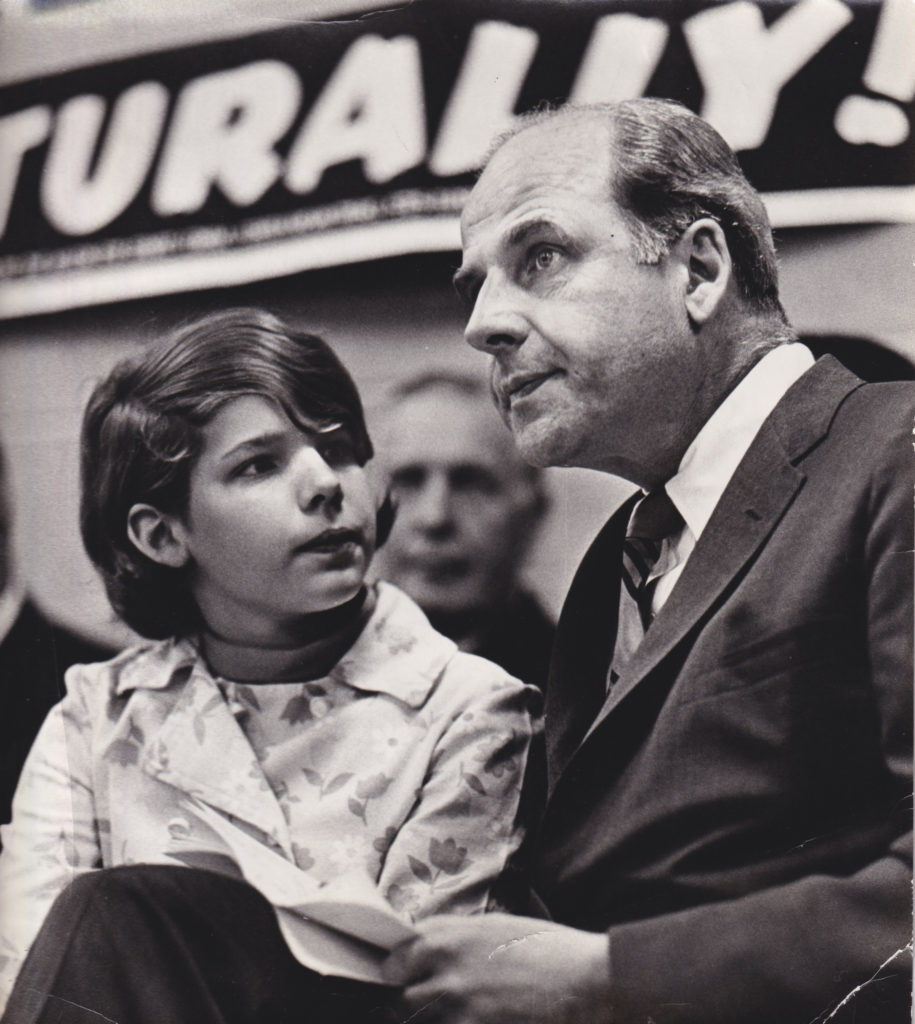
Tia and Gaylord Nelson at a rally. Photo courtesy of Tia Nelson.
With the education resource now released, what are you working on now?
I’ll spend all of 2020 promoting this resource and other resources on how one man made a powerful difference, and developing additional materials educating people about climate change. I’m working with the Years Project on short-film projects, which are aimed at driving action to address our climate crisis. I’ll continue to promote Earth Day work with a series of short-form videos about how we can all be part of climate solutions. I’m particularly motivated to spread the word about the need to curtail food waste, which, if it were a country, would be the world’s third-largest emitter of greenhouse gases, behind China and the United States. Everyone can so something about climate change, and I like to look for surprising solutions.
What do you think?
I would love to get your thoughts, suggestions, and questions in the comments below. Thanks for sharing!
Ian Lewitz
The author has turned off comments for this article.